Sergey Nazarov/iStock/GettyImages
Steak is graded by the U.S. Department of Agriculture before it's sold wholesale or retail. The grades are based on fat content, marbling and taste. Beef steaks are also sold fresh, wet-aged or dry-aged, all of which affect the flavor and texture of the meat. Prime steaks are the most common grade that are dry-aged, but they are also sold fresh and wet-aged.
Grades of Beef
The USDA designates five grades of beef. The two lowest grades are normally only sold wholesale to make premixed sandwich sauces and canned stew, chili and soup. The most economical cuts of beef sold retail are USDA Select. The marbling in Select beef is usually barely visible, comprising between 2 and 4 percent of the cut, and inconsistently distributed. Select beef tenderizes if cooked slowly in liquid at moderately low temperatures, so it's a good grade for roasts and stews but is not tender if quickly cooked with dry, intense heat such as broiling or grilling. If you want a tender steak, choose USDA Choice, which yields more flavor and tenderness. The best beef on the market is USDA Prime. Since only about 3 percent of all the beef produced receives the supreme Prime rating, most of it is sold only to restaurants.
Dry-Aged Steak
Aging beef intensifies its taste and increases its tenderness. Dry-aging deepens the flavor and softens the texture more than wet-aging. Dry-aged steak is typically cut from whole or partial sides of beef that have been hung in freezers for a few weeks in temperatures just barely above 32 degrees Fahrenheit. This process not only tenderizes the muscles in the beef, but it also makes the beef lose a good deal of natural moisture, which intensifies the beef flavor. Because the beef loses weight as the moisture dissipates and has to be trimmed of the top layer of the aged, hard meat, the price per pound increases to compensate for the loss of bulk.
Wet-Aged Steak
Wet-aged steak, which has a less intense flavor than its dry-aged counterpart, is usually less expensive. Instead of aging in an open-air freezer, it's vacuum-packed in shrink-wrap plastic; the aging occurs while the meat is transported between the slaughterhouse, wholesalers and retailers, which normally takes between four and 10 days. The packaging keeps the moisture intact, which slightly intensifies the beef taste and tenderizes it.
Fresh Steak
Unlike produce and most other perishable food, fresh steak is not the best choice. If meat is cut from a freshly butchered cow, it has no time to develop flavor or tenderness, so the meat will have little taste and is typically tougher than either wet- or dry-aged beef.
Related Articles
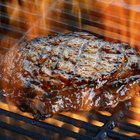
Choice Vs. Prime Beef Grades
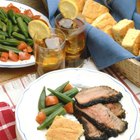
How to Cook London Broil

What Is a Rib-Eye Steak?
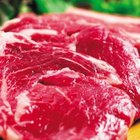
What Causes Raw Steaks to Lose Red ...

Do Filet Mignon Steaks Come From Female ...

What Is Sirloin Roast?

Different Cuts of Steak

How to Convection Roast a Brisket
How to Cook Buffalo Fillet

How to Cook a Beef Roast in a Roaster ...
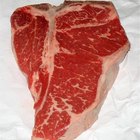
How to Cook Steak Tips

How to Cook Angus Beef Steak
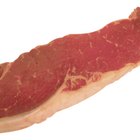
The Difference Between a Sirloin Roast ...
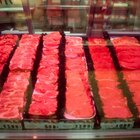
What Is the Difference in Top Sirloin & ...
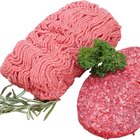
What Cuts of Meat Are Used for Ground ...

How to Grill a Ribeye on a Weber Q

Cuts of Meat From a Front Quarter of ...
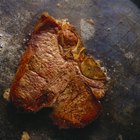
How to Cook Select Grade Beef Steak
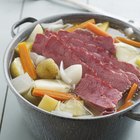
How to Cook a Large Amount of Corned ...
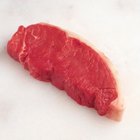
How to Slice a Roast for Jerky
References
Writer Bio
Cassie Damewood has been a writer and editor since 1985. She writes about food and cooking for various websites, including My Great Recipes, and serves as the copy editor for "Food Loves Beer" magazine. Damewood completed a Bachelor of Arts in English with an emphasis in creative writing at Miami University.